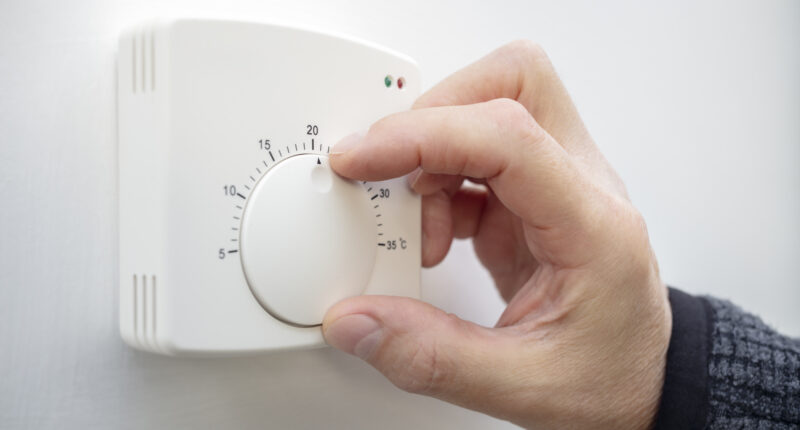Not only is mould in your home an eyesore but it can be damaging to your property.
It’s difficult to get rid of and can even lead to various health issues, but is more common than ever as people try and save money on energy bills.
Mould can form when there is damp, which is often caused by condensation occurring when the air inside homes hits the cold windows.
Water droplets then form and if not treated will cause mould to appear.
There have been many hacks posted online to tackle the issue, such as covering your windows in washing-up liquid, or using window vacs to wipe away the excess water,
Bathroom expert Evan Jones from Bathroom Supastore says preventing condensation from occurring is more important than using any hacks.


One of the best ways to do this is to use the correct temperature in your homes, he said.
Set the perfect temperature
With the cost of living being so high, most of us may wince at having to use our heating constantly.
But Evan says that correctly setting your thermostat can protect your home and your pocket.
“If you have incorrectly set the thermostat in your home there is a good chance that mould can develop in other rooms too.
Most read in Money
“Treating mould can be expensive so making sure the temperature in your home doesn’t drop isn’t as expensive in comparison,” he said.
To prevent mould in your home you will need to keep your rooms from cooling completely.
Evan said that keeping your home above 15°C should make this possible.
“Condensation will form on your windows when the outside air is too cold,” he explained.
“Keeping the inside of your home above 15°C will stop this condensation from forming and keeping your temperature constant could also help cut down on your energy bills.”
Evan also recommended checking that your heating is working correctly.
“Older thermostats may not be as reliable as newer ones so if yours is old, consider replacing it or adjusting the thermostat to turn the heating on at higher temperatures,” he suggested.
New thermostats start at around £50, but you will probably need to pay a professional to install it.
it’s also worth checking that your thermostat is located in the right place in your home so your heating is running efficiently.
Remove moisture from your home
Setting the temperature in your home to minimise the build-up of condensation is an effective way of stopping mould from forming in your home.
But there are other activities that can release moisture into your house and cause damp.
These include things such as running a hot bath, cooking without using lids on your pans or drying your clothes on a radiator.
If you are finding your home is filled with excess moisture then you could consider using a dehumidifier.
But remember, these start from around £100 to buy, and cost money to run as they use electricity.
“While electric dehumidifiers can be expensive and will add to your energy bill, using one will be a lot cheaper than having to fix a patch of mould in your home,” Evan said.
“If you can’t afford an electrical dehumidifier then alternatives such as interior dehumidifiers can be used.
“Although they aren’t as effective as their electrical counterparts they still remove moisture from your home and you can purchase them online for around £5.”
Get rid of existing mould
If you already have mould in your home then you should get rid of it straight away as it is harmful to your health and is unpleasant to live with.
Getting rid of mould can be a dangerous task in itself and it should often be left to the professionals.
“When getting rid of mould you should be cautious and consider getting a professional to do it for you,” Evan warned.
“With the right protection, you can attempt to get rid of mould caused by condensation but there is a risk of the mould spores spreading.”
He suggested that if you want to try and get rid of mould in your home yourself you should wear rubber gloves, goggles, a mask that covers your mouth and nose and something to cover your clothing.
You should also open all the windows in the room and close any doors to stop the mould spores from entering other rooms.


“When cleaning the mould you should always use a dedicated mould cleaner and follow the manufacturer’s instructions,” Evan said.
“One final tip is to wipe the mould off the walls with a damp cloth rather than a scrubbing brush as a brush will cause the mould spores to spread in your room.”










